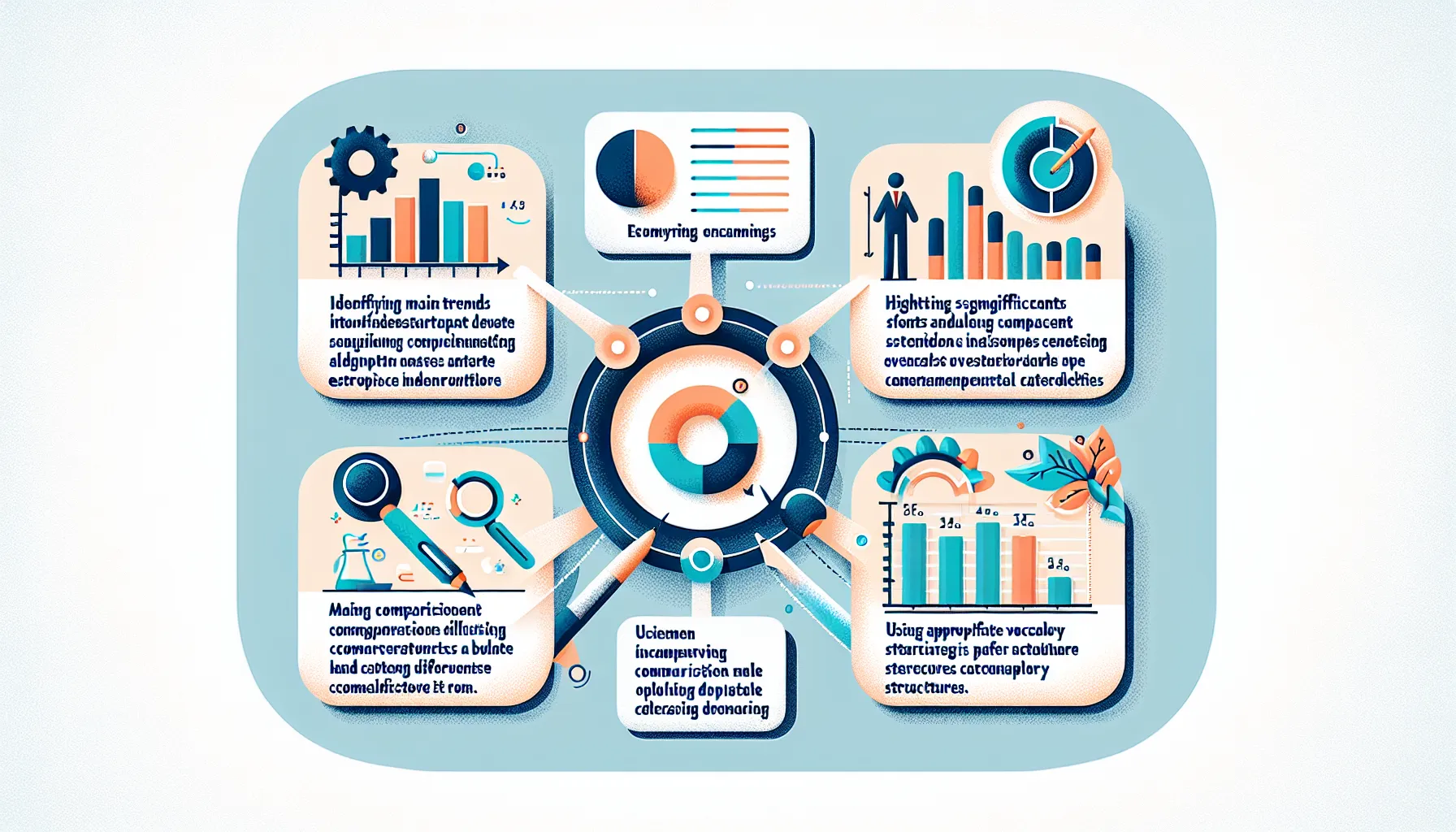Understanding the Importance of Table Description in IELTS Writing Task 1
IELTS Writing Task 1 often includes a table description component, which tests your ability to interpret and summarize numerical data. Mastering this skill is crucial for achieving a high score in the Academic IELTS exam. This section will explore why table description is essential and how it contributes to your overall performance.
Key Elements of Table Description
To excel in table description, you need to focus on several key elements:
- Identifying main trends
- Highlighting significant data points
- Making comparisons between categories
- Using appropriate vocabulary and structures
Understanding these elements will help you create a coherent and well-organized response to the task.

Essential Tips for Describing Tables in IELTS Writing Task 1
1. Analyze the Table Structure
Before you start writing, take a few minutes to understand the table’s structure:
- Identify the time periods or categories represented in rows and columns
- Note the units of measurement
- Look for any footnotes or additional information provided
This initial analysis will help you organize your thoughts and plan your response effectively.
2. Identify Overall Trends and Patterns
Start your description by presenting the general trend or pattern visible in the data:
- Look for increases, decreases, or stable periods
- Identify any cyclical patterns or fluctuations
- Compare trends across different categories or time periods
For example: “Overall, the table shows a steady increase in internet usage across all age groups from 2010 to 2020, with the most significant growth observed in the 65+ age category.”
3. Highlight Key Features and Significant Data Points
After presenting the overall trend, focus on specific noteworthy features:
- Identify the highest and lowest values
- Point out any unexpected or unusual data points
- Mention significant changes or turning points
For instance: “The most striking feature is the dramatic rise in internet usage among seniors (65+), which more than tripled from 20% in 2010 to 65% in 2020.”
4. Make Relevant Comparisons
Comparing data within the table adds depth to your description:
- Compare values between different categories
- Contrast changes over time for various groups
- Use comparative and superlative forms appropriately
Example: “While the 18-34 age group maintained the highest internet usage throughout the decade, the gap between this group and older demographics narrowed considerably by 2020.”
5. Use Appropriate Vocabulary and Structures
Employ a range of vocabulary and grammatical structures to describe the data accurately:
- Use varied verbs: increase, rise, grow, surge, decline, drop, plummet
- Include adverbs of degree: slightly, moderately, significantly, dramatically
- Utilize phrases for comparison: in contrast to, whereas, while, as opposed to
For example: “The percentage of internet users in the 35-49 age group grew steadily, climbing from 68% in 2010 to 89% in 2020, whereas the 50-64 age group experienced a more dramatic surge, nearly doubling from 45% to 87% over the same period.”
6. Organize Your Response Logically
Structure your response in a clear and logical manner:
- Introduction: Summarize the table’s content and state the overall trend
- Body paragraph 1: Describe the main features and significant data points
- Body paragraph 2: Make relevant comparisons and discuss secondary trends
- Conclusion: Summarize the key points without introducing new information
This structure ensures a coherent and well-organized response that addresses all aspects of the table.
7. Practice Time Management
Allocate your time wisely during the exam:
- Spend 2-3 minutes analyzing the table and planning your response
- Use 15-17 minutes for writing your description
- Reserve 1-2 minutes for proofreading and making minor corrections
Regular practice with timed exercises will help you improve your speed and efficiency in table description tasks.
Common Pitfalls to Avoid in IELTS Table Description
To ensure you maximize your score, be aware of these common mistakes:
- Copying numbers directly from the table without interpretation
- Describing every single data point instead of focusing on key features
- Neglecting to mention the overall trend or pattern
- Using personal opinions or speculating about reasons for the data trends
- Forgetting to use a variety of vocabulary and sentence structures
By avoiding these pitfalls and implementing the tips provided, you’ll be well-equipped to tackle any table description task in IELTS Writing Task 1.
Next Steps: Enhancing Your Table Description Skills
To further improve your performance in IELTS Writing Task 1 table description:
- Practice with a variety of table types and topics
- Time yourself regularly to build speed and efficiency
- Seek feedback from a qualified IELTS instructor or study partner
- Review official IELTS sample answers to understand the expected standard
- Create a personal vocabulary bank of useful terms for describing data
By consistently applying these strategies and practicing regularly, you’ll develop the skills needed to excel in IELTS Writing Task 1 table description tasks.
[internal_links]
Remember, mastering table description is a crucial skill not only for the IELTS exam but also for academic and professional contexts where data interpretation is valued. Keep practicing, and you’ll see significant improvements in your ability to analyze and describe tabular information effectively.